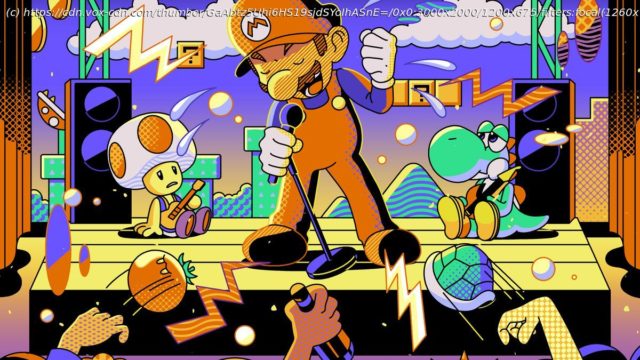Composers of scores for games like Hollow Knight, Warhammer, and A Short Hike speak on their processes for writing songs designed to be played for hours.
I enjoy games that make me think, which means I often find myself pausing — not literally pressing pause, but simply staying still — to consider what I need to do next. Those are the moments, like stopping to investigate how I can climb that wall in Ori and the Blind Forest or checking my inventory before heading into the mines in Coral Island, that game soundtracks come into the forefront of my mind.
And there are a ton of those moments in any given game. So how do composers make game music that doesn’t, frankly, get annoying? These days, game soundtracks regularly exceed 100 tracks — but players are liable to spend hundreds of hours putzing around massive games like Elden Ring. Even after collective days of playtime — or hours spent trying to grind through a tough level where the music doesn’t change — songs from our favorite games are nostalgic, motivating, thrilling. How?
We asked 13 video game composers, who have scored the likes of Hollow Knight, Assassin’s Creed, and Pacific Drive, just that: When writing music for video games, you know going in that the songs will be replayed over and over. What are a few tactics you use, whether they relate to music theory or game design, to make sure players don’t get annoyed with in-game music?
Here are their answers.
[These interviews were conducted via email and edited for format and clarity.] Chipzel, aka Niamh Houston (Dicey Dungeons, Interstellaria)
My general rule is that if I don’t hate myself after obsessively listening to my own music for the purpose of the project, on repeat, in development, then it can’t be that annoying. Christopher Larkin (Hollow Knight, Tohu)
The ultimate goal is to devise music that provides a balance between the feeling of repetition and variation. If you repeat too much within one loop, that’s only going to get multiplied when each loop occurs, and will therefore become very irritating. On the other hand, if you through-compose inside the loop — that is to say, if you have no repetition and always have it evolving — you may end up with something that is hard to grasp, and the loop point will actually become more obvious, contrary to the intent behind through-composition.
Our ears always seek patterns, so we like repetition, but I also think our brains really get off on subtle changes to those repeating patterns. This sort of thing can be found in theme and variation. I like to have easily recognisable and digestible themes, but I also like to take these things and put them in new contexts with variation. It is a tricky balance and I don’t think I always get it right. In any case I believe looping tracks that have a significant amount of interest through the balance of pattern forming and variation is key for the loops to work well.
But there is another area which provides a lot of interest for the player, and that is in how the loops are implemented, especially if there [is] more than one mix state for the track. Team Cherry have done a fine job with implementing the three-layer system of the music, where we have one “main” layer, a “sub” layer, and an “action” layer. It is in the constant shift of volume between these three layers as the player moves throughout the world that gives a lot more variation on top of what is already within the composition of the loop. Daniel Olsén (Sayonara Wild Hearts, The Gardens Between)
I don’t really have a rule for this. Generally I just try to have melodies overlap each other enough so it kind of becomes a little drone-y. I also like when I get a good feeling from the songs starting over, hopefully feeling more like a progression, rather than a loop. But most of all, if we put the song in the game and realize it’s too repetitive, I just have to revisit it, make it longer, make certain things less pronounced, or change repetitive elements. Jason Graves (Dead Space, Tomb Raider)
A large part of this, as simple as it may seem, is to write music that continually moves forward and does not repeat itself. I avoid looping music within the game itself. But, of course, replaying levels or entire games is always encouraged!
Music implementation is the key to keeping things from sounding too repetitive. I always work as closely with the developers as possible. Much of this comes from closely collaborating with the audio team; obviously, every game is different. One of the general ideas is using stems to keep things fresh — turning different instruments up and down, not just gameplay dependant but also time-based. The combination of the two, along with a fairly large selection of stems to choose from, can make the music feel like it’s constantly moving forward. Jesper Kyd (Assassin’s Creed Valhalla, Warhammer: Verminitide 2)
This is something I find fascinating and truly one of the things that makes video game music stand out from other music industries. In pop music a lot of work is put towards making the music as instantly gratifying as possible. In film, the music has to fit perfectly with the story and the scene, and even if the music doesn’t play along with the scene, it needs to connect you to the story. For a video game score, we can take many different perspectives.
For example, in Warhammer: Vermintide 2 the music approach has me join the Skaven army and so you are thrown into this world that does not feel welcome and can feel quite otherworldly. The music is inspired in a realistic sense of what it would mean to put a Skaven band together in this world.






